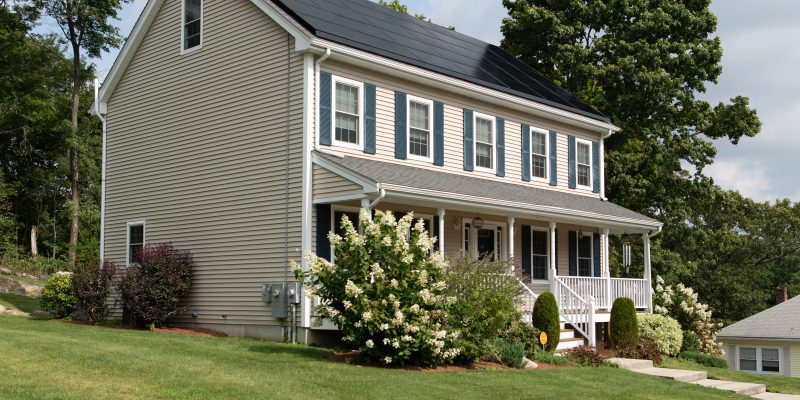There has been a fair bit of concern and outrage in response to the recent Australian Energy Market Commission (AEMC) announcement that solar panel owners could be charged to export energy they sell to the grid. This is completely understandable, particularly because it hasn’t been explained very well in the media. So what does it mean for home energy upgrades moving forward? Have those about to install a new solar panel system missed the boat? And how would the proposed export tariff impact solar panel owners and their feed-in tariffs?
A quick albeit somewhat technical explainer
For anyone interested in the details of the proposal, you can read it here. Most importantly, the objective of the export tariff is to fund upgrades to the grid to increase the amount of feed-in from rooftop solar systems. You may not realise, but different locations and even houses in the same neighbourhood can have different caps on the amount of energy that can be fed in. One key factor is the capacity of the wires and transformers locally.
Case in point: A design energyFit provided for a customer in Orange NSW incorporated a 6kW feed-in cap because the nearest transformer was too small. Whereas, an energyFit customer in the ACT (on three-phase power) had 15kW (2 ½ times more), and a customer in Melbourne had 30Kw (5 times more!) The funds raised by a new export charge are proposed to be earmarked for upgrades that bring older infrastructure into line with ACT and Melbourne.
The second part of the proposed export tariff, is that it would be ‘allowed’ not mandated. Not every provider would take it up. So, again shop around. Change your habits and mindset. Make home energy upgrades to appliances and systems when it makes sense to do so. Think about upgrades as investments, not just lifestyle choices. But, whatever you do, be sure you’re informed by unbiased sources and take a bit of time to make a plan that is flexible and adaptive to change – both in the grid and providers, as well as in your own household.
Feed-in vs Export tariffs
Feed-in tariffs have been wildly successful at encouraging solar uptake in Australia. In recent years, around 300,000 houses per year are making the investment, and we’re somewhere between 15% and 20% of households at this point. We won’t rehash the arguments, but there is a lot of energy production on sunny days. Feeding more into the system on these days, from whatever source, just isn’t viable.
What you can – and definitely should – do right now
Regardless of whether export tariffs eventuate, you really should shop around for the best deal on electricity – both feed-in rates as well as supply charge. If you spend 15 minutes finding a better feed-in tariff, this would more than offset proposed extra export charges. Here are the numbers, simplified: Switching from a 7 cent to a 9 cent feed-in tariff would get the average solar system owner an extra $257 a year. Even with a new export charge of around $70, the switch would more than make up for it. (Of course, you don’t have to wait till an export fee to shop around.)
Your energy system and contracts are not set-and-forget. Every so often, maybe every year or so, check what you’re using, see what you’re paying and getting, and look around for a better deal. Negotiate with your current provider to match other offers. Things change. Stay on top of it and you’ll always be better off.
Figure: 3 phase residential transporter
Another idea
Is the answer a battery to store that excess energy? In our analysis, for most households batteries are still too expensive. We don’t think the export tariff will change that.
A less costly ‘storage’ solution is to run your hot water heater in the day from your solar panels, before feeding into the grid. You’ll pay nothing to create and store the energy in thermal form. Many people are surprised to learn that a 400L water tank can store as much energy (albeit in thermal form) as TWO Tesla power wall batteries (electric potential form). The stored thermal can be used for showers at night or in the early morning.
Change is the only constant
It’s important to keep in mind that the Australian energy system is constantly changing. It should and it must. As new technologies are introduced, and the costs of old technologies fall (or rise, in the case of implied costs of carbon emissions), the energy system should adapt to provide energy that is lower cost, lower emissions, and more reliable.
The same is true for households. We replace old appliances with more efficient appliances, we change our usage of appliances, and since the introduction of solar panels, many of us can now participate in making our own electricity.
It’s important to adopt a mindset that is okay with change. The challenge is overcoming the desire to have a set-and-forget approach to energy generation, storage, and consumption. We don’t need to make changes every day, but we should expect that changes will happen when emerging technologies lead to new ways of doing things. This will guide the future of home energy upgrades.
The future is still bright
The future is still bright, even with these possible changes. This is true, regardless of your motivation to get solar – whether you’re concerned about energy cost, CO2 emissions, having a more comfortable home, or energy independence.
The key is to make better quality decisions in a dynamic environment. To find out how we can assist in an energyFit home design, reach out to the team!


